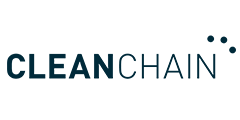How to efficiently gather Scope 3 GHG data from suppliers
Article
Gathering accurate Scope 3 data from suppliers is essential to understanding your environmental impact and making informed decisions – however, it is a notoriously difficult task. So, let’s explore how to efficiently gather Scope 3 data from your suppliers and accelerate your sustainability journey.
Environmental responsibility and sustainability are not just buzzwords; they are commitments.
Over the next few years, regulation will reflect the importance of acknowledging your environmental impact and commitment to making improvements. For instance, by 2026, 50,000 EU and 10,000 non-EU companies will be subject to the EU’s Corporate Sustainability Reporting Directive (CSRD). In California, two recently signed laws will require climate risk and emissions disclosure from more than 5,000 companies doing business in the state. And finally, the US government’s Securities and Exchange Commission (SEC) has proposed a climate disclosure rule would apply to all 4,000+ US-listed companies. The regulation is coming, whether you are ready or not!
For organisations looking to reduce their carbon footprint and make meaningful strides toward sustainability, Scope 3 emissions are a critical piece of the puzzle. Scope 3 emissions refer to the indirect greenhouse gas emissions that occur across your value chain. Gathering accurate Scope 3 data from suppliers is essential to understanding your environmental impact and making informed decisions – however, it is a notoriously difficult task. So, let’s explore how to efficiently gather Scope 3 data from your suppliers and accelerate your sustainability journey.
Why is Scope 3 data important?
Before we dive into the “how,” let’s briefly touch on the “why.” Scope 3 emissions often account for the largest portion of a company’s carbon footprint – up to 90% for some companies. Ignoring these emissions means neglecting a significant chunk of your environmental impact. By collecting Scope 3 data, you can identify opportunities for reduction, set meaningful targets, and foster a culture of sustainability within your supply chain.
How to gather Scope 3 emissions?
Collecting Scope 3 emissions data is a genuinely formidable problem: it involves complex analysis, consumes a significant amount of time and resources, and poses difficulties when integrating into established enterprise data systems and workflows. Nevertheless, it’s a puzzle that can be solved strategically and in a cost-effective manner.
For every business that struggles with Scope 3 data collection, solutions point in four major directions:
1. Adopting more sophisticated Scope 3 GHG data calculation approaches that improve the completeness and accuracy of your data.
Increasing scrutiny from regulators, investors, and customers necessitates improved data quality. To demonstrate progress in reducing Scope 3 emissions effectively, a reliable baseline is essential. A high-quality Scope 3 data collection strategy entails defining the material GHG emission categories for your company, often requiring external expertise for accurate assessments. It also prioritizes more specific and accurate calculation methods, such as activity or hybrid-based approaches, and utilizes up-to-date and granular emission factors to ensure precision in the data collected. These factors can vary significantly depending on factors like geography, technology, and timeframe.
2. Engaging suppliers at scale, efficiently and productively, using both software and people-power to expand your reach cost-effectively.
Obtaining granular, primary data from suppliers for robust reporting and climate strategies is crucial. Still, it often comes at a significant opportunity cost for sustainability leaders, who need to focus on immediate business value and emissions reduction efforts rather than engaging in lengthy data collection endeavors. Smaller businesses may struggle to compel suppliers to respond to surveys, and supplier cooperation can be challenging. Engaging suppliers efficiently and at scale requires a combination of software solutions and an additional workforce. Outsourced experts who understand the suppliers’ time zones and languages can be vital in filling the primary data collection gap.
3. Identifying carbon hotspots, data gaps and deviations in your supply chain emissions data by pairing carbon expertise with flexible data visualization platforms.
The value of the data collected from suppliers lies in the insights it provides. To effectively leverage this data, you must identify your carbon hotspots, including the most emissions-intensive categories, regions, and suppliers, as well as the best opportunities for reduction. It’s also crucial to differentiate between underperforming suppliers, carbon-efficient “bright spots,” and those providing inaccurate data. Simply sifting through spreadsheets won’t yield efficient answers to these questions. Instead, you need experts who understand Scope 3 emissions and sector-specific nuances, along with data visualization tools that help pinpoint carbon hotspots and data quality issues. Pairing expertise with business intelligence platforms can accelerate your engagement strategy, enhance reporting, inform product design, and turn carbon hotspots into opportunities rather than risks.
4. Delivering Scope 3 data into existing enterprise data systems so that it is accessible to your stakeholders and informs business-critical decisions.
Many companies struggle with disconnected carbon accounting and ESG systems, making their data collection efforts less business-relevant. Achieving seamless integration involves constantly balancing the need for insightful data with resource constraints. To truly leverage Scope 3 data, many companies require continuous data delivery beyond conventional ESG reporting software and disclosure platforms.
Efficiently gathering Scope 3 data from suppliers requires a combination of effective communication, technology and collaboration. Remember, sustainability is a shared responsibility, so you and your suppliers will need to roll up your sleeves, start those conversations, and collect that valuable data. Fortunately, there is a solution that makes this process a lot simpler and quicker called DataAssured.
ADEC’s Scope 3 DataAssured solution
Companies facing challenges in Scope 3 data collection can navigate towards success by adopting comprehensive and resilient calculation methods, establishing widespread supplier engagement, and introducing adaptable information management solutions. Learn more about the Scope 3 DataAssured solution today.
Get in touch dataassured@adec-innovations.com




